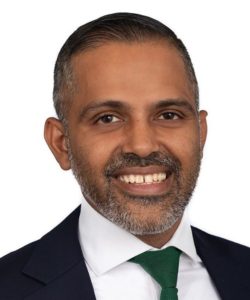News of the proposed merger between the AFA and FPA – which requires approval by at least 75% of both member bases – gets our nod for the Story of the Week and no doubt one of the key industry stories of 2022…
The Association of Financial Advisers and the Financial Planning Association of Australia have announced their intention to merge, subject to member support.
Members of both associations received notification today of the proposed merger, in which the rationale argues that a single and united voice representing the interests of financial advisers in Australia – and the clients they serve – will deliver a better outcome for all stakeholders in the future.
The merged association, the name of which is yet to be decided, is proposed to consist of an inaugural board that would comprise eight directors from the current FPA board and four from the current AFA board.
The new association’s CEO is intended to be current FPA chief, Sarah Abood, with AFA CEO, Phil Anderson to take on a General Manager role in the transitional arrangements.

Both associations require 75% of eligible members to approve the merger, where member consultation and the subsequent voting process will occur between now and November, for a targeted effective merger date of 1 January 2023.
The FPA and AFA boards have proposed that the FPA’s Certified Financial Planner designation be the primary designation of the merged association, but that the Fellow Chartered Financial Practitioner (FChFP) and the Chartered Life Practitioner (ChLP) designations previously offered by the AFA would continue to be recognised and supported, although not available to new applicants.
Current FPA Chair, David Sharpe, noted the close working relationship enjoyed by the two associations, particularly in recent years, and that by creating a unified voice, the merged association “…would add clarity and power to the positions it takes and avoid duplication of activity and erosion of its messages.”
Meanwhile, AFA National President, Sam Perera, added that any merged association would honour the heritage of both the FPA and AFA, in particular recognising the AFA’s 76-year history:
“The AFA has a strong background in representing members from diverse groups and this would continue within any new association.”








Fantastic news…if professions representative voices can work together or join together to create a clearer…stronger representation…we will enjoy a more beneficial collective result…a big improvememt on past divisions.
When did either of these two actually work FOR advisers?
Fantastic. The best news for many of us older members of the AFA who have been calling for ONE Association to represent ALL Financial Advisers for over 25 years. It can only be beneficial for ONE BIG Association representing ALL advisers. Well done to the current respective leaders of both Associations for announcing their attention to merge the AFA and FPA. Great Vison at this critical time in our industry as we move through this Paradigm shift in our financial services industry.
With most things in life, when you get an eclectic group of people to join forces to create a unified voice, it can also create differing opinions and views.
This, in it’s own right is not a bad thing, so long as each participant has the experience and ability to fully understand what is being presented and has the willingness to do the right thing and not follow theoretical idealism, or a group mentality of choosing “Party lines” when it is patently wrong.
The fact that there could be 8 FPA and 4 AFA directors on the board, immediately leads to a mismatch and ability for FPA members to outvote AFA directors.
Historically, the FPA have had little experience and have been more detrimental for Life risk Advisers with their inability to grasp the differing needs and requirements of risk and Investment Advisers.
One voice does not necessarily mean best voice.
Two questions that would be an interesting test and should be asked on an individual basis is;
Do you agree that risk advice should be separated from Investment advice and have separate Education requirements?
If yes, why? If no, why?
What this does is then allow Directors to have their own opinion and by expanding on this, allows us to see if they can explain their views in a manner that makes sense.
There are many people with opinions.
The hard part is to get people with sufficient experience and knowledge that will make a truly positive change for better outcomes.
So the new amalgamated board will have eight members from the FPA and four from the AFA.
Is the AFA that broke? Is the AFA board that stupid?
When the dust settles, I have a fear that risk writers will be consigned to history when it comes to representation on serious issues like LIF to government.
And while we are on the subject of risk advice, how come Ms Levy has been able to ignore the long-programmed review of LIF in her QAR?
It looks like the AFA and the FPA have been engaging in an amalgamation foreplay for some time, but as usual, aspects of life risk advice have been sidelined while Ms Levy duchessed the advice industry with leaked information, well before the QAR is delivered to the Treasurer
Blind freddy could have seen that coming when they started throwing gigs together over the last 12 months.Happy to have joined “the other association” representing only Advisers.
the “other associations” are only most likely to cause more division. For a profession to enlist the assistance of society and regulators to their cause and to create a market shelter, there must be a unified strong collective. The more other associations step up to try and divide, the more division there will be, quite the opposite effect needed to create unison. I’m not saying the AFA and FPA have had it right in the past, I certainly am among those that think they have not done enough to represent us… but Id like to see that change in the future, rather than creating new breakaway groups
Comments are closed.